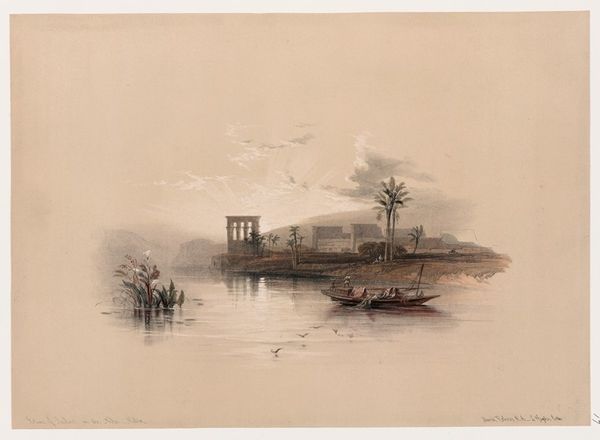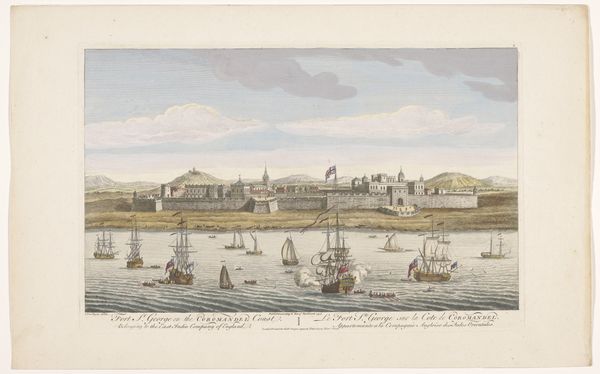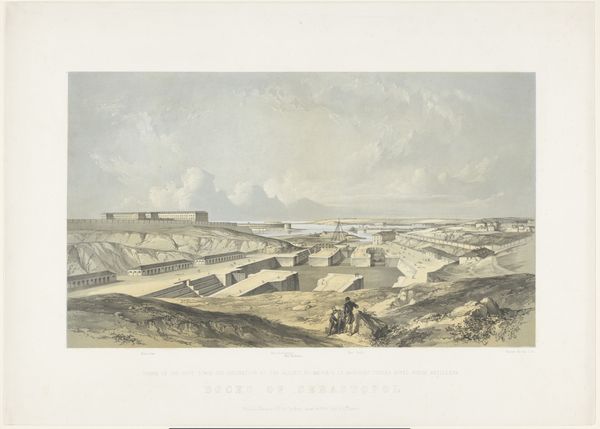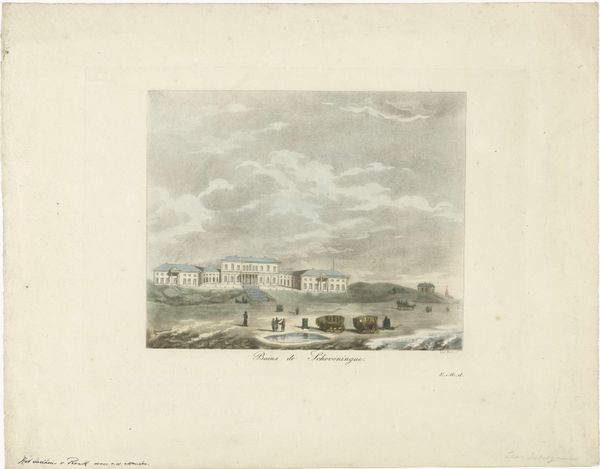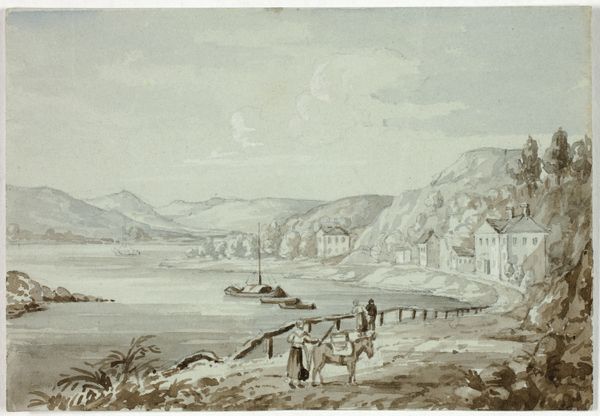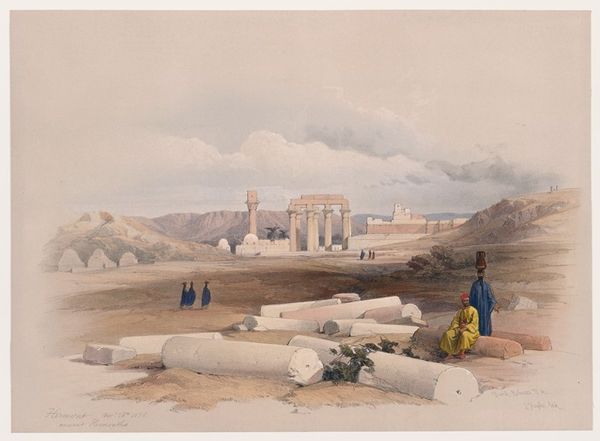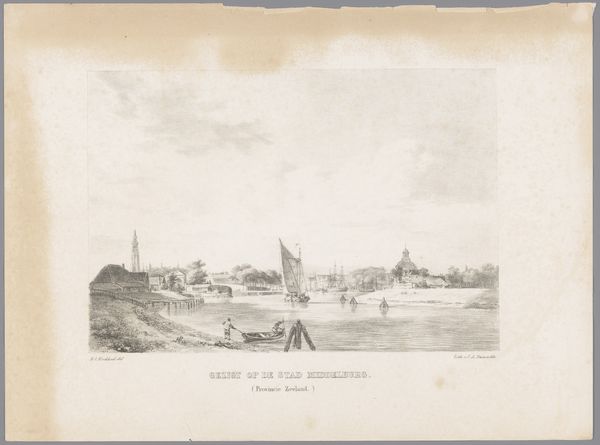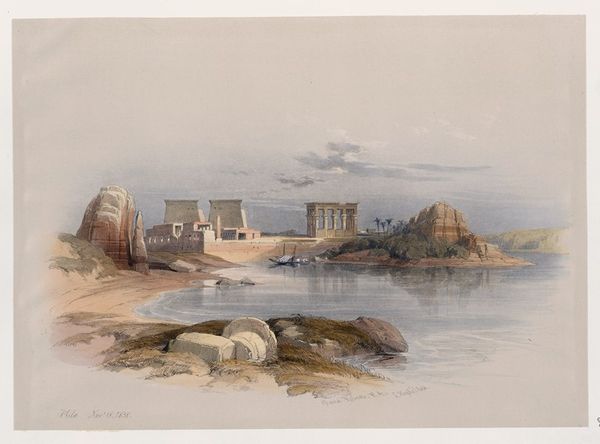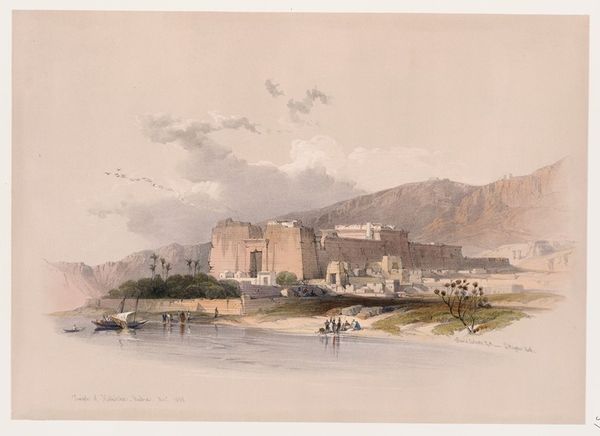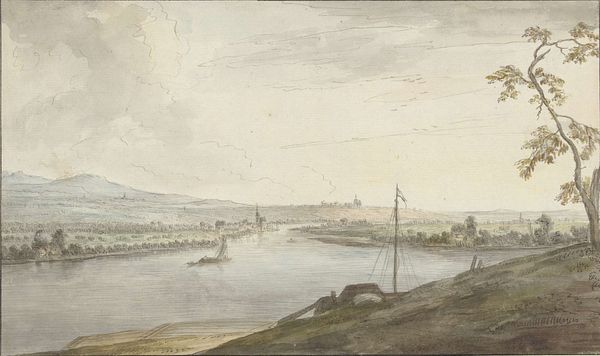
mixed-media, painting, watercolor
#
mixed-media
#
painting
#
landscape
#
ancient-egyptian-art
#
watercolor
#
romanticism
#
orientalism
#
cityscape
#
watercolour illustration
#
mixed medium
#
watercolor
Copyright: Public Domain: Artvee
Curator: It’s truly arresting isn’t it? David Roberts’ "Ruins of Luxor, from the south-west," dating from sometime between 1846 and 1849. Editor: Yes, the washed out palette almost gives it the feel of an ancient photograph, capturing this monumentality softened by the hazy distance and the obvious age of everything. I wonder what paper and pigment Roberts was working with. Curator: Knowing Roberts, and considering this was made during a period defined by the visual culture of Orientalism, the deliberate use of that pale wash might symbolize the weight of history, the sheer distance both in time and space between the viewer and the depicted location. There's a reverence communicated. Editor: Absolutely, and perhaps a carefully constructed one. I can imagine the supplies necessary to execute this kind of painting in situ, on location, quite challenging to mobilize in the mid-19th century. Was the scene sketched initially and painted later? What kind of support did he have for such an endeavor? Curator: Roberts was known for his meticulous preliminary sketches. They underpinned the later, larger watercolors and prints that were circulated widely back in Europe. In terms of iconography, notice how the single figure in the foreground seems so small and contemplative next to the sprawling temple complex. Editor: That’s a neat comparison of scale that perhaps intentionally romanticizes the human experience in counterpoint to what endures materially through ancient empires. What labor went into building that temple, quarrying the stone, transporting it? And now, a solitary figure beside what’s left of it all. Curator: Indeed. This ruin speaks to the temporality of human endeavour, reminding us how civilizations rise and fall. This view of Luxor prompts reflections on themes of mortality and enduring human spirit. Editor: It makes me think about the power that we, as humans, imbue upon objects—the sacredness we construct socially around certain materials and sites, their capacity for prolonged symbolic meaning. Curator: In the end, Roberts' watercolor serves as more than a picturesque scene. Editor: It's an artifact itself, reminding us that even depictions are subject to historical and material conditions.
Comments
No comments
Be the first to comment and join the conversation on the ultimate creative platform.
